I’m the kind of girl who must summit every mountain she approaches, and never stays in one place long enough for moss to grow under her. But I’m also the kind of girl who wears her seatbelt in the backseat of a car and her helmet on a bicycle. I am about as risk averse as an adventurous wanderlust can be.
How does a risk averse sailor cast off the bowlines and sail across oceans? She analyzes the risk diligently, assumes it fully, takes precautions so that the risk never comes to fruition, and puts safety measures into place so that even if the risk occurs she is safe from harm. Reason over fear. Action over paralysis.
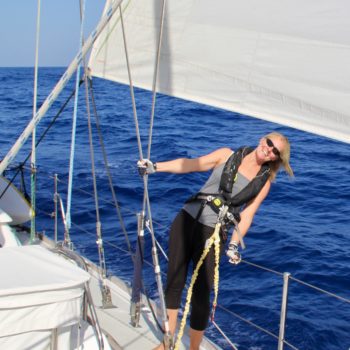
Safety first. The Risk Averse Sailor only sails on sea worthy vessels – vessels that can handle more than she can, vessels that will keep her safe when she’s down and out. She likes full keels, center cockpits and stainless bar lifelines. The Risk Averse Sailor stocks her boat with all the advisable safety technologies and paraphernalia – radars, RTEs (radar target enhancers), AIS with transponder (Automatic Identification System, which reports other boats’ status, positions, speeds and course to your chart plotter and your boat’s information to other boats), EPIRBs (Emergency Position Indicator Radio Beacons, which report the boat’s position to the coast guard), PLBs (Personal Locator Beacons, which report a crew overboard’s position to your chart plotter), liferaft, flares, fire extinguishers, jacklines, first aid kit, handheld VHF radio with DSC (digital select calling, which sends out a distress signal with the radio’s location), lifesling, inflatable pylon with flotation aid, spotlights, binoculars, autopilot, sea anchor, satellite phone, GPS and paper charts, echosounder, etc.
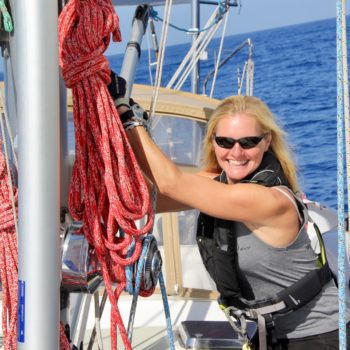
Know your limits. The Risk Averse Sailor doesn’t sail during hurricane or cyclone season in affected regions; she doesn’t set out on a passage when a storm is predicted; she only sets sails when conditions are forecasted to be manageable for the vessel she’s on and the crew she’s with; and she sails away from weather that brews up while she’s at sea. She reefs early and shakes out reefs late. She drops the traveler before the toe rail goes under and shortens sail before the bow rounds up. She vigilantly watches clouds on the horizon and splotches on the radar, ready to furl or heave to if bad weather approaches. She has wind she’s comfortable with – 15-20 knots on a light day cruiser, 25-30 knots on a heavy ocean cruiser – and if it kicks up any higher she requests help from her crew to keep the boat under control. The Risk Averse Sailor does not let schedules or competition or ego or crew dictate her course or speed.
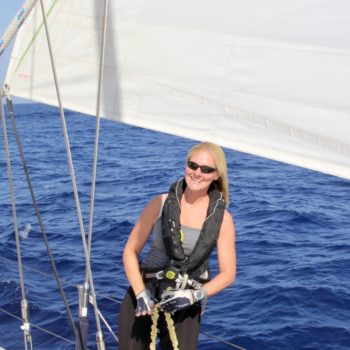
The Risk Averse Sailor has two nonnegotiable rules.
Rule #1: Stay on the boat. The Risk Averse Sailor never leaves the cockpit without a PFD buckled on and an EPIRB and strobe light zipped into the PFD. If the conditions are bad or it’s night time, she only leaves the cockpit with a tether clipped between her PFD’s harness and the jacklines running up and down the deck. She always follows the adage, “One hand for the boat, one hand for yourself,” holding onto lifelines and eyebrows and stantions and shrouds as she makes her way forward and aft. She wraps an arm around the furled sail when she perches up on the bow pulpit to watch for balmies, and an arm around the aft arch when she perches on the stern push pit to check sail trim. The Risk Averse Sailor practices man overboard drills and mentally prepares for one anytime a crew goes forward in difficult conditions. The Risk Averse Sailor does not consume, and doesn’t permit her fellow crew to consume, alcohol while the boat is underway.
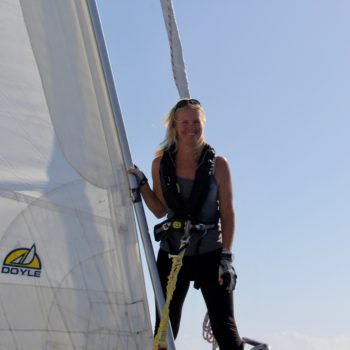
Rule #2: Don’t hit anything. The Risk Averse Sailor studies the International Regulations for Preventing Collisions at Sea, the rules on conduct of vessels, navigation lights, sound and light signals, aids to navigation and charts. She obeys the rules, even where there isn’t another boat in hundreds of miles to see her navigational lights, even when a cut corner might be more expeditious and still likely safe. She doesn’t assume other vessels know the rules, and, in the case of charter boats and boats under way with fenders in the water, assumes they don’t. In all cases, she steers a wide berth of other vessels and goes the extra distance to find the deeper water. The Risk Averse Sailor knows the rules, follows the rules, and makes room for those that don’t.
The Risk Averse Sailor never approaches anything at a faster speed than she’s willing to hit it at. She approaches all docks, mooring balls and anchorages at a slow enough speed to not need reverse to stop forward motion. If the depth shoals unexpectedly or another vessel approaches closely, she backs off on speed to assess the situation. The Risk Averse Sailor believes that slow is pro, and doesn’t let her crew’s impatience hurry her.
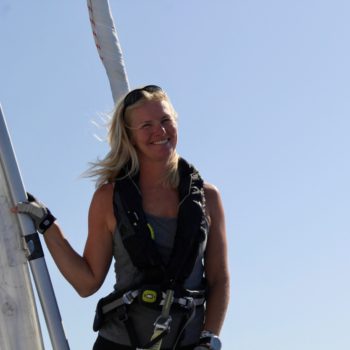
The Risk Averse Sailor isn’t afraid to stay at harbor when conditions require, but usually feels safer at sea. It’s a constant balancing act. But better to analyze those risks, take those precautions and cast off those bowlines, than to never leave the harbor!

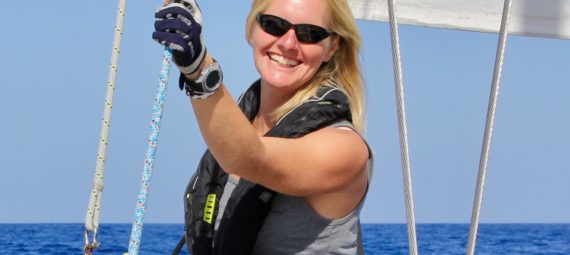
Better safe than sorry 😜
Brita- Very well said! I feel exactly the same way.
Well that really sums it up rather well. We can’t wait for your book.